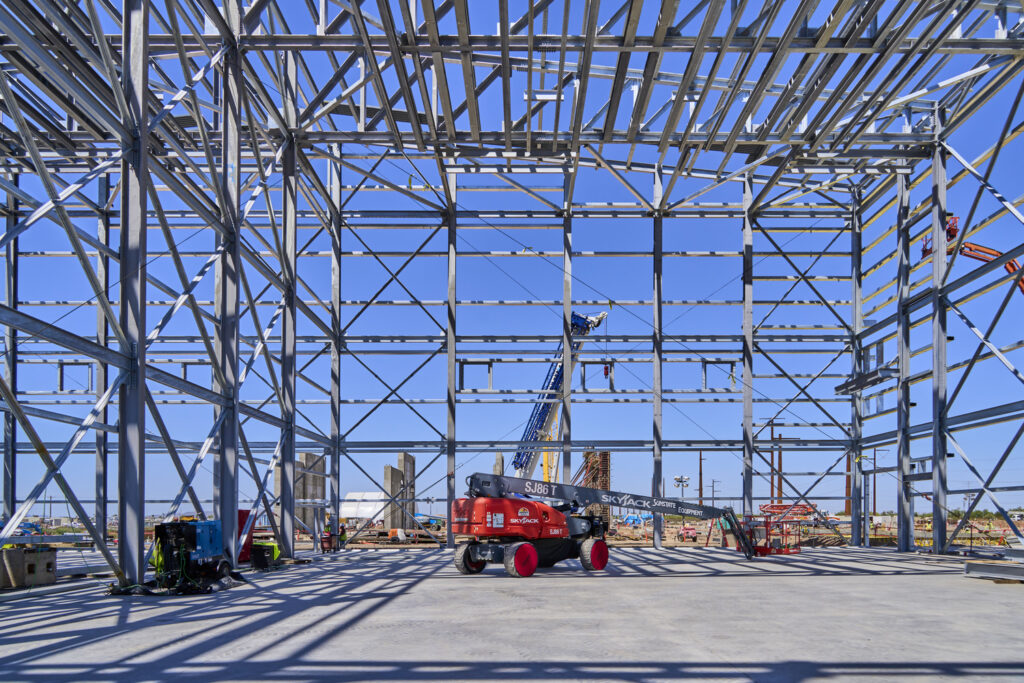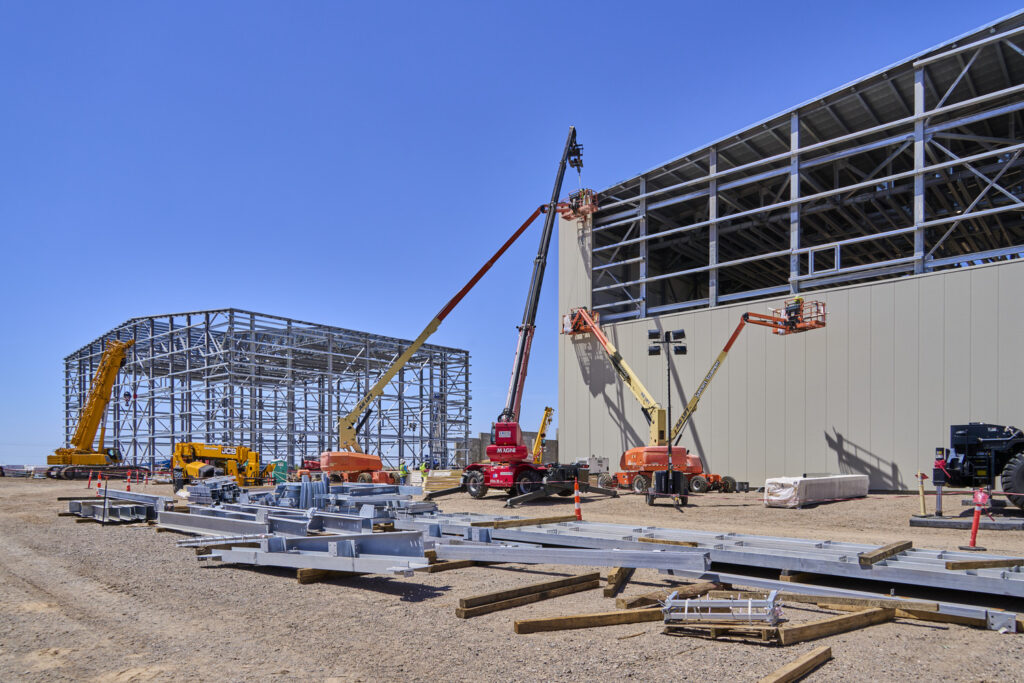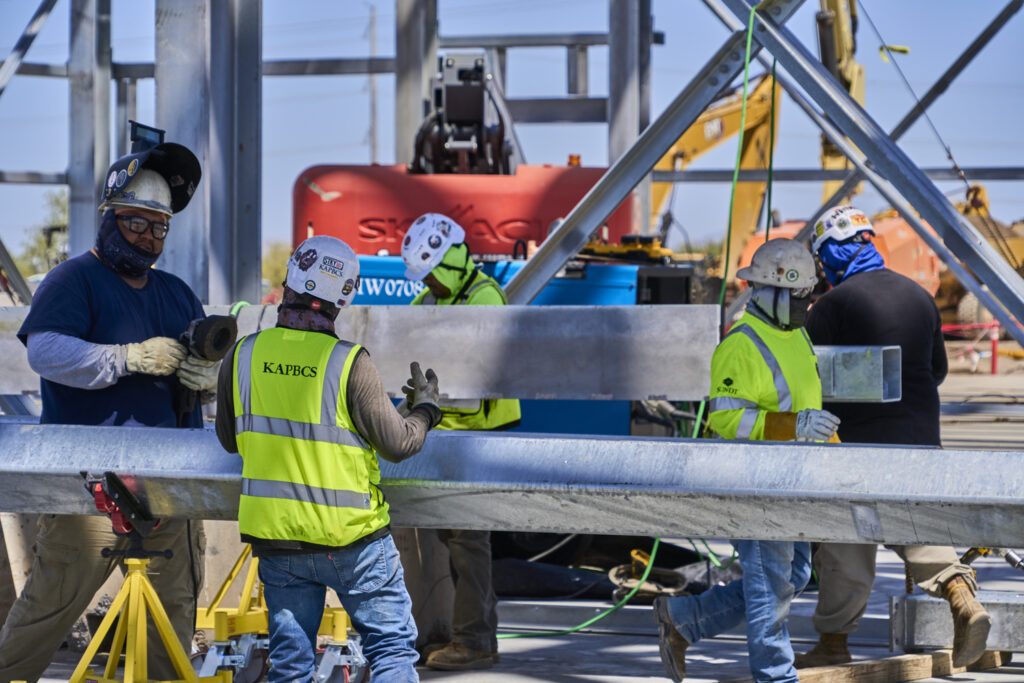In the remote deserts of Arizona and New Mexico, Sundt is building critical portions of SunZia, an $11 billion project that will facilitate the conversion and delivery of wind energy to nearly three million people. Powered by more than 1,000 wind turbines, it is currently the largest renewable energy infrastructure project in U.S. history. Sundt is supporting a piece of the infrastructure that includes constructing converter stations for a new transmission system, the work for which is divided across two separate jobsites in two different states: one in Corona, New Mexico and one in Coolidge, Arizona.
The owner is Pattern Energy, a company that develops, owns and operates utility-scale wind and solar power facilities in the United States, Canada, and Mexico. Sundt is acting as prime contractor under Quanta Infrastructure Solutions Group, a leading provider of electric power infrastructure solutions. Sundt’s Building Group, Southwest District is leading the effort with the help of the Industrial Group and Concrete Division, which have been brought on board to self-perform the structural steel and concrete for the power converter station buildings — the valve halls and service buildings, as well as all support buildings.

Meeting Diverse Energy Needs
Energy will be generated on the 3,515 megawatt, 550-mile wind facility in New Mexico and then transferred to an existing 500kVAC transmission grid in Arizona. The converter stations that Sundt is building will be equipped with technology to convert alternating current (AC) to direct current (DC) and vice versa, ensuring seamless energy transmission across state lines.
“Our role in constructing the transmission infrastructure is important, as the project’s goal is to serve a diverse range of energy needs — from residential to commercial,” said Project Executive Mike Nunn. “This project is especially exciting for us because of the huge positive impact it will have on communities in the Southwest.”
AC power will be utilized primarily for powering homes and businesses. The DC power generated will support high-demand applications, including the growing network of electric vehicle charging stations, particularly in energy-hungry regions like California.

Looking Out for Wildlife
Transmission lines and associated infrastructure are crucial components for the energy grid’s functioning, particularly in the effort to decrease reliance on fossil fuels and replace it with clean, renewable power sources. These lines transport energy, often produced in remote areas, across long distances to major cities and suburbs. However, due to SunZia’s massive scale and significant project footprint, getting approvals is a lengthy and complex process. The project requires coordination with state and federal regulators, as well as input from local and Tribal communities, environmental organizations and other stakeholders. One of the project’s most significant challenges has been minimizing its environmental impact while navigating the complex approval process.
“It’s really important that we look out for the wildlife here in the desert,” said Sr. Project Engineer Sierra Johnson, who is stationed at the Coolidge site. “Right now, for example, there’s a nighthawk that built its nest nearby, and the Corona team had a burrowing owl on their site. Another important initiative was relocating 15,000 cacti, most of them federally protected saguaros, before we broke ground. These things may prolong our construction timeline, but everyone is committed to protecting and preserving the land.”
The crew on site works closely with environmental impact surveyors contracted by Pattern to assess ecological concerns as they arise. With their help, the crew has been able to develop plans of action on how to proceed with the work without disturbing the wildlife. This considerate collaboration from the SunZia team and wildlife specialists allowed the nighthawk to nest in peace, and the bird was able to raise two healthy hatchlings. Construction was able to resume once the nighthawk and its hatchlings left their nest in late August.

Commitment to Excellence
Both the Corona and Coolidge teams have been powering through construction, demonstrating equal parts skill and efficiency through the extensive scope of self-perform work.
“Everyone on the team works extremely well together, from our own Sundt employee-owners on both the Corona and Coolidge team, to our subcontractors,” Mike said. “Each of our subcontractors brings their own unique expertise, and everyone has been able to learn from one another and build up a culture of trust and respect.”
The SunZia project has allowed us to lean into our core strengths of intra-company work and self-perform skills, as well as grow our presence in the Southwest. As Sundt continues to push forward on this historic project, the collaboration and dedication of our teams remain key drivers of success. From safeguarding local wildlife to executing quality construction, the project embodies our commitment to sustainability and excellence.